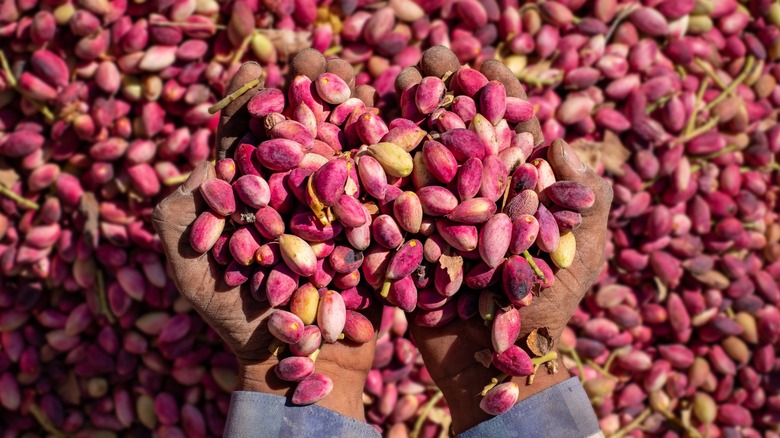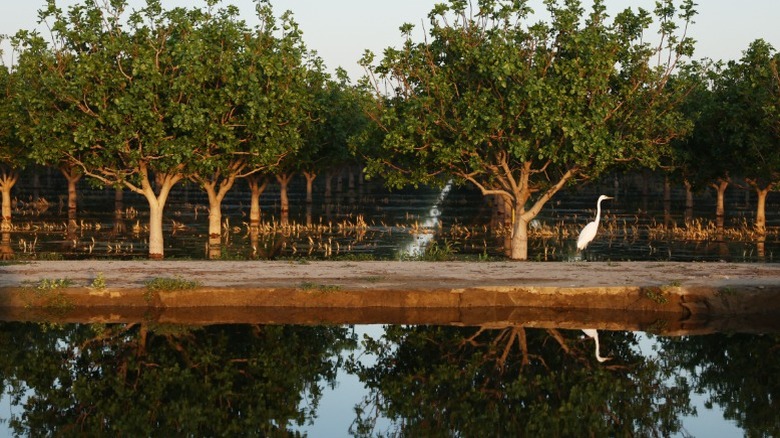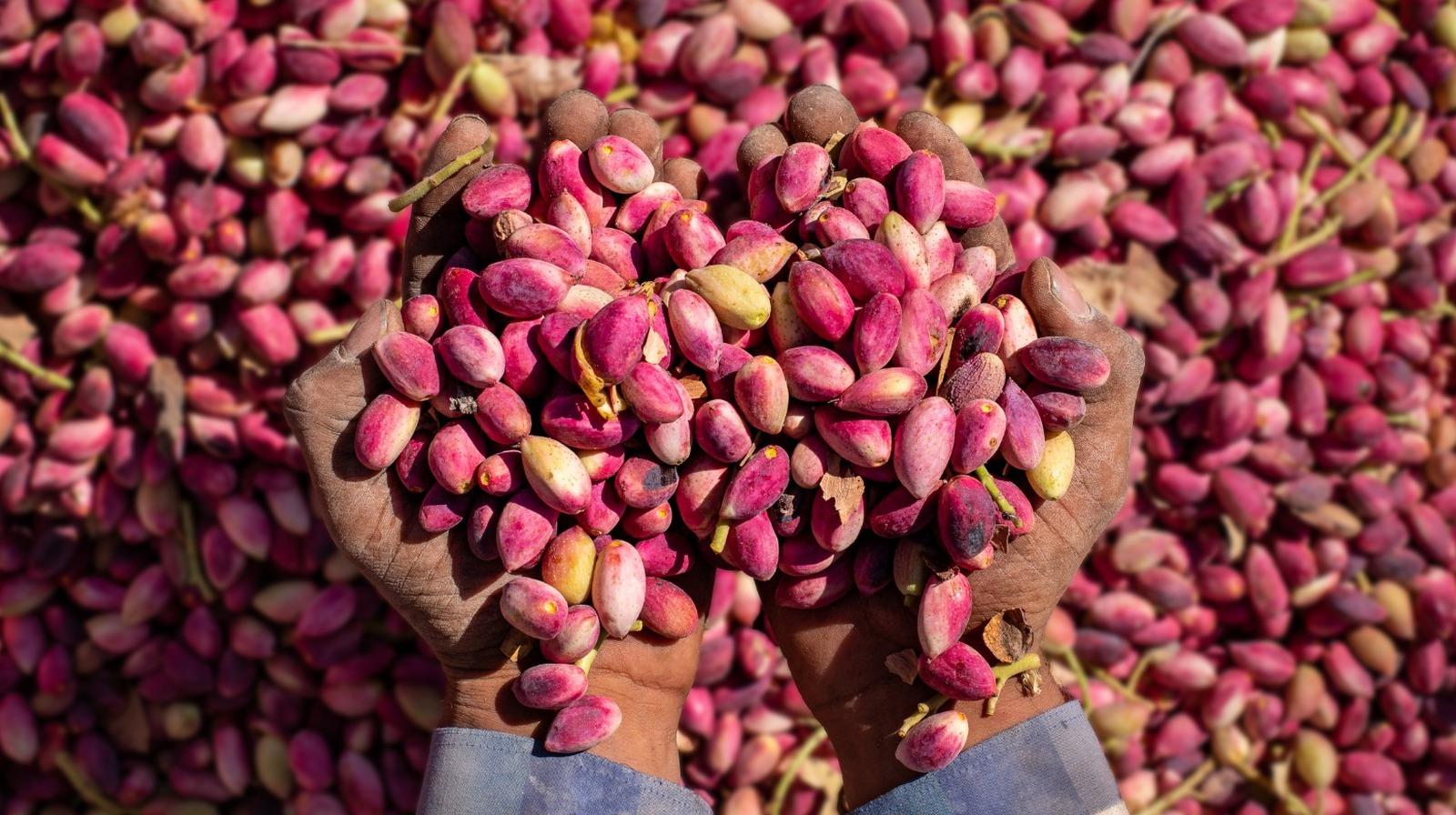
Gulcin Ragiboglu/Getty
When you're opening pistachios — or a bag of already-shelled goodness — you're probably used to seeing a nut with a soft-green hue. Pistachio-flavored goodies like ice cream or macarons are green as well (although, often an admittedly more fluorescent version than the nut's natural color). But pistachios haven't always been sold with this color.
Dating back to the 1930s, pistachios were actually a much brighter and deeper red. Unlike the natural green, these nuts were dyed red through the 1970s due to their very specific harvesting circumstances. While the United States is the top producer of pistachios worldwide today, countries in the Middle East like Iran and Turkey used to hold a significantly larger share of the production pie, where the nut originated. In the harvesting, drying, and exportation process, the nuts could potentially show stains. Pistachios are expensive, and because they were shipped around the world, the theory is that pistachios were dyed red in order to mask any potential discolorations. In short, the red dye was entirely cosmetic. Apparently, it even had a habit of dying the fingers and faces of those who indulged in the delicious nuts.
The nuts are packed with nutritional value, and we should all eat more pistachios. But, if you like the look of red pistachios better than the traditional green, they are still available for purchase. You likely won't be able to find them at your local grocery store, but red pistachios are sold online through specialty stores.
Red pistachios disappeared for political reasons

Mario Tama/Getty
While the coloring of pistachios could cause a mess, the nut actually went back to its green roots because of international politics. Despite it only representing 8% of the market now, Iran previously exported millions of pounds of pistachios yearly. But, in 1979 during the Iranian Revolution, 52 Americans were held hostage by Iranian militants in the United States Embassy. Subsequently, the US government cut down on imports from the country.
The US had grown pistachios since the 1930s (in a very limited crop), but these restrictions allowed American farmers to take advantage of what was a massive hole in the market. In 1976, California only produced 1.5 million pounds of nuts, but this number spiked in the years following — in 1980 it produced 27 million pounds (via Business Insider). Although the US government lifted the embargo when the hostages were released in 1981, the damage to the Iranian pistachio market had already been done. Additionally, American farmers forced a lawsuit after accusing Iranian producers of selling products too cheap (aka, "product dumping"), and ultimately the US imposed a 241% tariff on Iranian pistachios. The country could still export its goods to Europe, but had entirely lost the US market, which continued to grow on its own in California. California now makes up 99% of the country's pistachio production, and holds $5.6 billion worth of the global market — the other 1% of US pistachios are grown in Arizona, Texas, and New Mexico.



